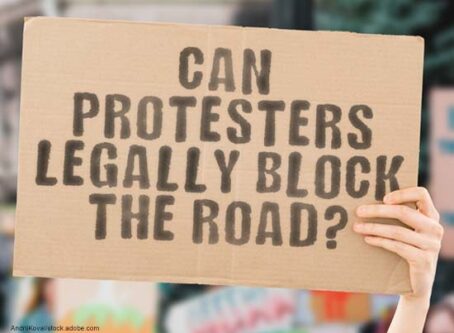California’s Clean Truck Fund to take a third of truckers’ income
Despite handouts from the state government, at least one Los Angeles Board of Harbor Commissioners member believes truckers are getting “screwed” by California’s Clean Truck Fund fees.
During a Los Angeles Board of Harbor Commissioners special meeting on Thursday, Aug. 19, Director of Planning and Strategy Mike Keenan presented the results of this year’s port truck driver survey. Results reveal that more than three-quarters are Hispanic/Latino and more than two-thirds are immigrants. About half are owner-operators, with a median household income of $60,000. Port truckers average about 11 hours of work each day. Truckers earn about $67 per trip.
Edward Renwick, vice president of the commission, said that at that rate, Clean Truck Fund fees up to $20 will “confiscate” a third of a port trucker’s income. Approved in March 2020 by the commission, the Clean Truck Fund hits cargo coming out of the port with a fee of $10 per loaded 20-foot equivalent unit or $20 per loaded 40-foot equivalent unit. The fee will be charged to the “beneficial cargo owner” for loaded containers hauled by a truck.
However, Renwick said beneficial cargo owners like Walmart may pass down that cost to the truckers. Walmart opposed the Clean Truck Fund when it was being proposed.
“If someone is in the bottom half, what we’re really talking about is the working poor,” Renwick said. “These are hardworking Americans that are working 11 hours a day, struggling to get by, and we’re talking about confiscating a third of their income.”
Keenan conceded that it is likely that truckers will shoulder the burden of the $20 Clean Truck Fund fees.
“Often, a lot of these costs get pushed down to the players in the game who have the least market power,” Keenan said. “In practice, that has been truck drivers in the past.”
That is especially true for immigrant truckers, many of whom are looking to purchase their own truck in pursuit of the American Dream. Keenan said the relative ease of entry into trucking means drivers face a lot of competition, including with those drivers willing to eat the $20 fee to gain an advantage.
When talking about approving the fee last year, Renwick said “We were wrong.”
Jaime Lee, commission president, told Renwick that if they were to move to eliminate the fee, the entire commission faces the possibility of being fired. Renwick said he is fine with the entire commission being replaced with those wanting to keep the fee, stating at least it will not be them who “devastated families.” Lee proposed everyone staying with the board is what is needed, as a new commission will keep the fees with no regard for truckers. At least the current commission has the mindset to mitigate the unintended consequences truckers face. Commissioner Diane Middleton told Renwick he needs solutions first, but the board is with him.
“Be a champion for truck drivers,” Middleton told Renwick. “I believe everyone on this board will line up behind you and say ‘Go get ‘em .’”
Clean Truck Fund
The Clean Truck Fund rate stems from California’s Clean Truck Program and Clean Air Action Plan.
Phase one of the Clean Trucks Program update requires any new truck registered in the Port Drayage Trucks Registry after Oct. 1, 2018, to be model year 2014 or newer. The goal is to have all port trucks at zero emissions by 2035.
However, trucking companies need incentive to get there. The Clean Truck Fund is being established to give trucking companies that incentive. Those that reach near-zero or zero emission will be exempt. In the meantime, money from the fund will be used to subsidize newer, cleaner trucks.
Beginning 2023, newly registered trucks will be required to have CARB-certified low-NOx engines or better. Trucks that have already been registered before 2023 will be able to continue operating regardless of emission quality.
Although ultra-low NOx natural gas trucks are technically feasible, the infrastructure needs improvement for widespread deployment, according to the report. Battery and zero-emission trucks are in the “demonstration phase.”
Additionally, price differentials between diesel trucks and low-NOx trucks are as high as $150,000. If the Clean Truck Fund rate generates $90 million a year, about 600 trucks can be fully transitioned. However, the fund will likely generate less revenue each year as trucks slowly reach emissions compliance.
Proposed rates for noncompliant trucks ranged from $5 to $70 and more. However, the Los Angeles Board of Harbor Commissioners decided on the lower end of that range, upsetting environmentalist groups.
Todd Campbell, vice president of public policy and regulatory affairs for Clean Energy Fuels, expressed strong disapproval of the rate.
“I think $10 is a nonstarter,” Campbell said. “It’s not going to create a significant transition, not the one that you’re anticipating, and I certainly wouldn’t call it a zero-emission plan, because you’re never going to get zero with $10.”
Campbell said he would like to see a rate closer to $70 per FEU. Other stakeholders echoed that sentiment, including representatives from SoCalGas, the California Hydrogen Business Council, Breathe L.A., the Coalition for Clean Air and the Natural Resources Defense Council.
Maxlink Logistics CEO Mary Liu requested that the ports raise the rate to $100 per container. Maxlink is a six-truck fleet that replaced two of those trucks with cleaner trucks through grants. Liu said the replacements have put her company at a “competitive disadvantage” with higher truck costs. She said a higher rate will support companies like Maxlink.
The Ports of Los Angeles and Long Beach will be hosting a Clean Truck Fund public workshop on Aug. 26 and Sept. 1. Click here for more details. LL









